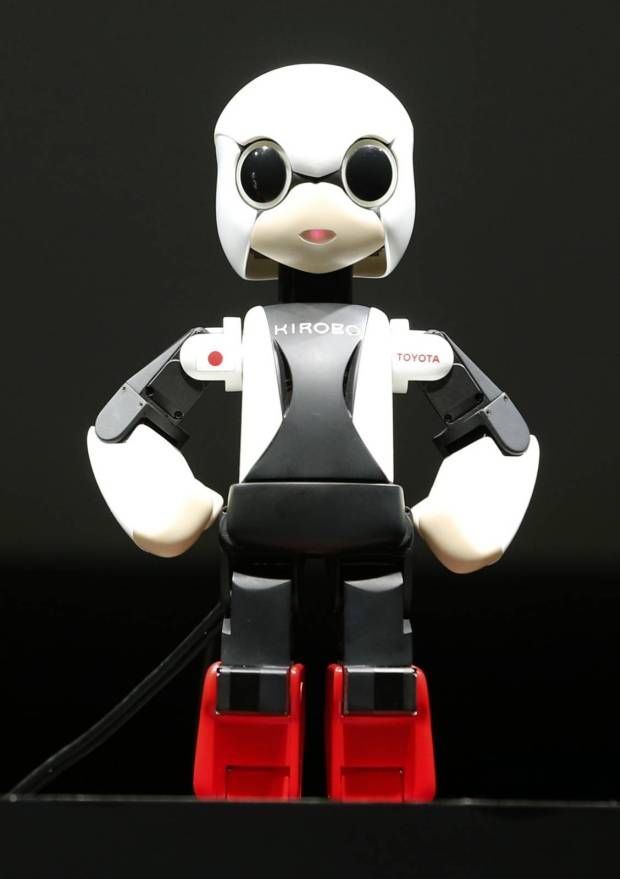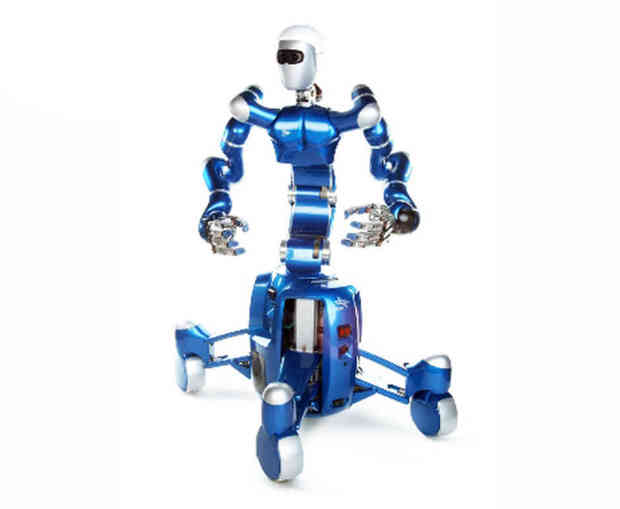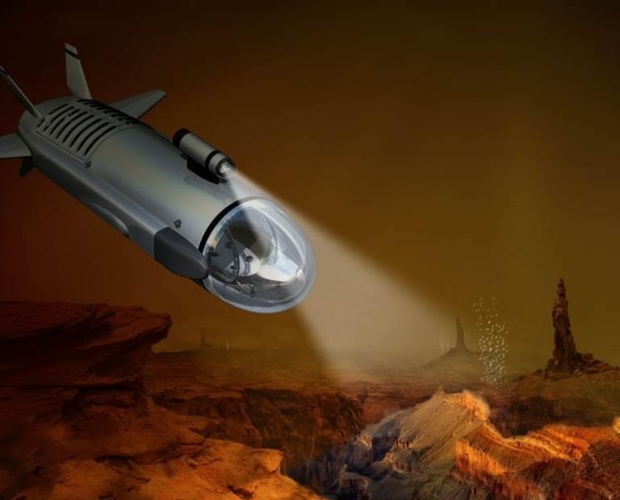While the future of Earth at the current rate of human activity, appears grim, the science and technological endeavors continue with full momentum trying to search for answers in the form of other sources of life, unimaginable mysteries, and more importantly the search for an earth like planet for securing a refuge in the worst case scenario to maintain the prevalence of human society but also to ensure the flourishing of humanity together and beginning of civilization on a totally new planet in space. Here are a few more of these cool looking, futuristic space robots which will help us to make a mark on the vast universe.
Kirobo
Imagine a future where just a single human astronaut travels on a mission to Mars, but they’re not alone – with them is a robot that can talk and act like a person, keeping the solitary human company as they work. This talking robot could keep lonely astronauts company.
That’s a future the University of Tokyo, with its Kirobo android, is working towards. The small robotic companion arrived at the ISS on 9 August 2013 and. with the arrival of JAXA astronaut Koichi Wakata on 7 November, scientists tested out its conversation abilities.

The robot, weighing just one kilogram (2.2 pounds), has capabilities that include voice and speech recognition and even the ability to recognise faces.
‘How did you get out here into space, Kirobo?’ asked Wakata in Japanese during a trial, which is the only language the robot speaks. ‘On Kounotori from Tanegashima,’ the robot replied. This refers to the vehicle that took the robot to the station, Kounotori 4, well as the launch site, Tanegashima Space Centre in Japan.
While it’s a primitive conversation for now. Through continued research scientists hope to one day design talking robots that can keep astronauts company on missions.
Remote-control Robot Mechanic
This German android will one day be used to repair satellites. To test out exciting new developments in remote-control technology, the German Aerospace Centre (DLR) is developing Justin for ESA, an android that will soon be controlled from afar by astronauts on the ISS. Justin has four wheels, two arms, weighs about 200 kilograms (440 pounds) and is about as tall as a regular human.
It’s a humanoid robot with lightweight, articulated arms and two hands with four fingers. This makes it ideal for conducting experiments in inhospitable places. On the ISS a remote-motion system will enable an astronaut to move, in turn moving the robot in the same manner. In this way. the astronaut will be able to control the robot on the ground.
Justin will be capable of a range of intricate, human-like movements. An array of sensors enable a remote operator to control Justin. There are 41 to control torque. 43 for position, two for stereo vision and five motion-sensing devices.

Telerobotics is one of the most exciting realms of robotics yet to be truly tapped. It involves the use of remote controls to manoeuvre a distant robot. For example, a future astronaut working in Martian orbit might be tasked with controlling a robot on the surface, eliminating the 16-minute or so time delay that would result if it were controlled from back here on Earth.
However, Justin doesn’t need a human astronaut to work this mobile platform will have a long range and can operate autonomously if necessary. The robot is equipped with independent wheels that work in equilibrium with the upper body to provide a firm base. It has sensors and cameras that can create three-dimensional reconstructions of its environment, so it can even perform without human command.
Justin is scheduled to be controlled from the ISS later this year. In the future there are plans to have a free-floating version in space that astronauts can use to fix satellites, while much further down the line, telerobots like Justin will enable us to explore worlds such as the Moon and Mars from orbit.
Titan Aerial Daughtercraft
Titan is arguably the most-desirable place in the Solar System that space scientists want to visit, as it’s the most Earth-like world within our reach. With liquid lakes on its surface, a climate system and even a thick atmosphere, experts the world over have been clamouring for a mission to Saturn’s giant moon to advance upon the pioneering but brief visit the Huygens probe made to its surface in 2005.
Step forward the Titan Aerial Daughtercraft, a proposal in the NASA Innovative Advanced Concepts (NIAC) programme. The mission would involve sending a small quadcopter drone to Titan with a mothership, with the drone then intended to fly above the surface of this fascinating world.

The drone would be capable of operating in the air and also landing on the ground to take samples. When it finally runs out of fuel it would return to its mothership to recharge.
The machine would also be autonomous, meaning controllers on Earth would not need to continually give it commands like the Mars rovers. Instead it could be left to its own devices for a day, before sending all the data it had gathered back to Earth from the mothership.
In their proposal, the researchers add that the same autonomous capabilities that need to be developed for this mission could be applicable to future exploratory missions on Mars or even Saturn’s moon Enceladus.
Although there’s no set date for when this concept might take flight, fans of space exploration the world over will be hoping it eventually sees the light of day. The autonomous robot that might one day explore the sides of Saturn’s moon.
Also Read: Life on Mars, Titan or Europa – A Genuine Possibility?
Titan Submarine
This robot could find out what lurks in the depths of Titan’s vast lakes and seas. Perhaps in the future, while a drone roams about overhead on Titan, a submarine will simultaneously be exploring the largest lake on this fascinating moon’s surface. Another proposal for the NIAC programme, this autonomous vehicle would be focused on exploring the depths of the Titanian seas. These aren’t composed of water, but liquid hydrocarbons, which leaves many to ponder what is harboured in their depths.

The mission is designed as a successor to a surface-dwelling lander such as the Titan Mare Explorer (TiME), a separately proposed boat that would sail the seas of Titan.
The target, Kraken Mare, is over 1,000 kilometres (621 miles) across and is thought to have a depth of about 300 metres (984 feet). The primary goal would be to learn what the seas are made of and what is in them, including the possibility of finding plant or microbial life there.
Like the drone above it, this autonomous vehicle would be able to operate on its own, perhaps returning to the surface and transmitting its data back to a mothership. This would then send information to controllers on Earth. Researchers also note a similar vehicle to this could be used to explore oceans on other worlds such as Europa.
This current pace and the advancement that it brings in the field of technology and robotics has undoubtedly guaranteed an exponential growth in the evolution of robots leading to far promising, effective and successful space exploration missions in the near future.
-end-


































